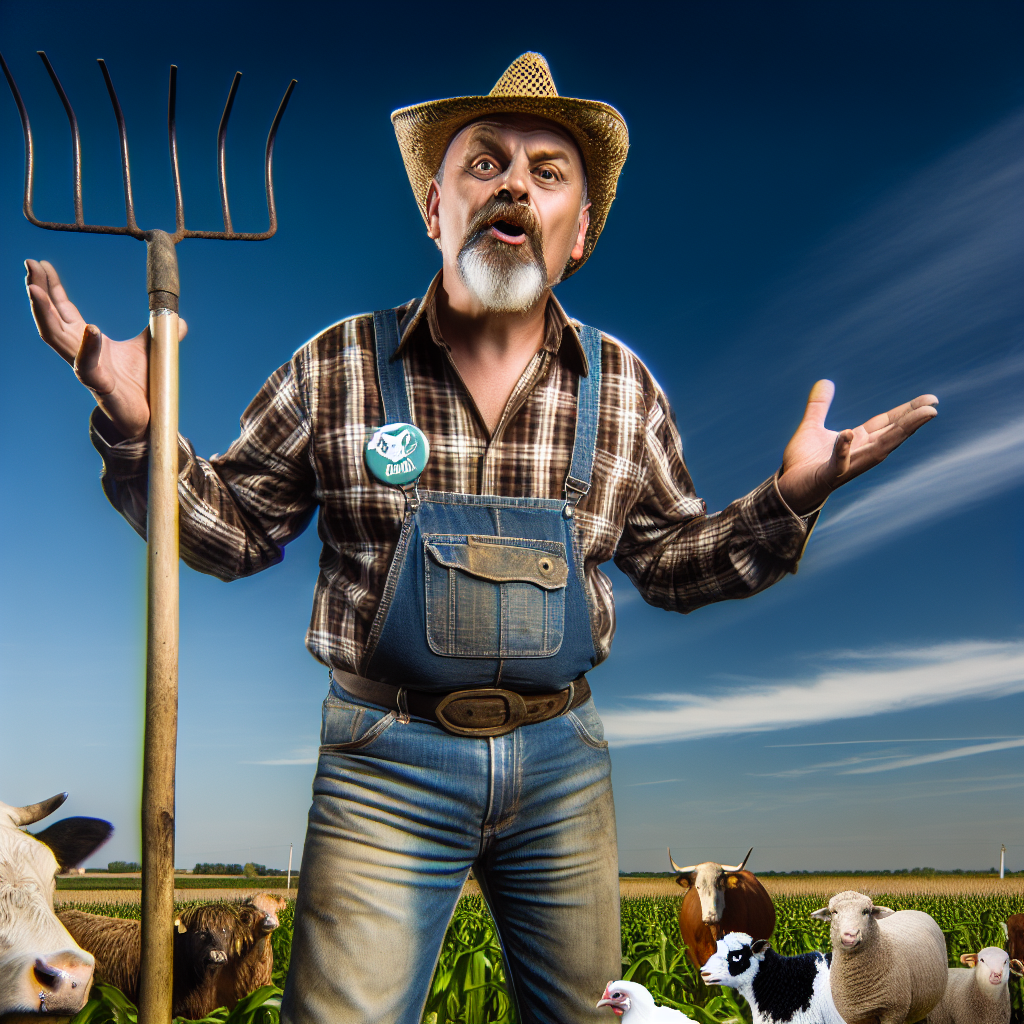Understanding Your Audience
Identifying Customer Values
Farmers can enhance their brand storytelling by understanding their audience’s values.
Start by identifying what matters most to your customers.
Many consumers prioritize sustainability and ethical farming practices.
Others may focus on local sourcing and food quality.
Engage with your customers through surveys and social media polls.
This will provide insights into their preferences and needs.
Analyze feedback to adapt your approach effectively.
Preferences and Expectations
Knowing audience preferences helps tailor your messaging.
Different demographics have unique expectations of farmers.
For instance, millennials often value transparency in sourcing.
Older generations may appreciate tradition and heritage.
Utilize customer personas to guide your storytelling strategy.
This ensures your content resonates with their experiences.
Creating Engaging Content
Develop stories that connect emotionally with your audience.
Share personal anecdotes about your farming journey.
Transform Your Agribusiness
Unlock your farm's potential with expert advice tailored to your needs. Get actionable steps that drive real results.
Get StartedHighlight challenges you’ve overcome and successes you celebrate.
Use visuals to complement your storytelling, such as photos and videos.
Visual content often captures attention better than text alone.
Lastly, encourage dialogue with your audience.
Invite them to share their own stories and experiences.
Crafting Your Unique Brand Narrative
Highlighting Your Farm’s History
Your farm’s history holds the key to your brand’s uniqueness.
Start by identifying significant milestones in your farming journey.
Every farmer has a story, and yours can capture the interest of your audience.
Share the origins of your farm, such as when it was established and by whom.
Include personal anecdotes that reflect your family’s connection to the land.
Describe how your farm has evolved over the years.
Mention any challenges you faced and how you overcame them.
Highlight your farm’s traditions and practices that set you apart.
These details create an emotional bond with your consumers.
Engage your audience by showcasing your values through storytelling.
Consider incorporating photos or videos of your farm’s history.
Visual elements enhance your narrative and captivate your audience.
Utilize social media platforms to share snippets of your story consistently.
This approach will help build your brand’s recognition and loyalty.
Remember, authenticity is crucial in brand storytelling.
Your genuine passion for farming will resonate with others.
Each personal touch strengthens your narrative and connects with customers.
A well-crafted brand story can distinguish your farm in a competitive market.
Ultimately, it invites customers to be part of your farming legacy.
Showcase Your Farming Business
Publish your professional farming services profile on our blog for a one-time fee of $200 and reach a dedicated audience of farmers and agribusiness owners.
Publish Your ProfileUtilizing Visual Storytelling
The Power of Images in Communicating Your Brand
Images resonate deeply with audiences on an emotional level.
They can convey messages more powerfully than words alone.
Visual storytelling captivates attention and sparks interest.
Farmers should harness the potential of impactful visuals.
Selecting Compelling Images
Choose images that reflect your farm’s unique identity.
Showcase vibrant crops and happy livestock in your visuals.
Natural landscapes can emphasize the beauty of your operation.
Consider using close-up shots to highlight specific details.
Authentic images can build trust with your audience.
Telling Your Story Through Photography
Document daily activities on your farm with photographs.
Highlight moments that showcase hard work and dedication.
Include images of family members and employees in action.
Storytelling through photography creates a personal connection.
This fosters a sense of community and loyalty among consumers.
Using Video to Enhance Engagement
Video content can showcase your farm’s journey.
Consider creating short clips that tell your brand’s story.
Behind-the-scenes videos can offer valuable insights into operations.
Engaging narratives can captivate and retain viewers’ attention.
Utilize platforms like Instagram or YouTube to share your videos.
Distributing Your Visual Content
Share your images and videos across various platforms.
Social media channels can expand your reach effectively.
Consider creating a visually appealing website for your brand.
Email newsletters can also showcase your compelling visuals.
Engagement increases when visuals are effectively used.
Learn More: Top E-commerce Tools for Growing Your Farm Business
Emphasizing Authenticity: Building Trust Through Honest Storytelling
The Importance of Authenticity
Authenticity plays a crucial role in brand storytelling for farmers.
When farmers share genuine experiences, they connect deeply with their audience.
Strong authenticity builds trust and fosters loyalty among customers.
Sharing Personal Experiences
Farmers should share their personal stories and challenges.
These narratives resonate with consumers seeking authenticity.
For instance, Emily’s farm shares the journey of sustainable practices.
This personal touch creates a relatable image for customers.
Showcasing the Farming Process
Transparency about farming processes is vital.
Videos or photos of daily routines engage the audience.
Highlighting challenges, like pest control or weather issues, humanizes the experience.
For example, Mark’s farm uses Instagram to share real-time updates.
This invites viewers into the everyday realities of farming.
Building Community Connections
Farmers should engage with local communities actively.
Participating in local markets or events helps build relationships.
Sharing experiences at these venues adds a personal touch.
Showcase Your Farming Business
Publish your professional farming services profile on our blog for a one-time fee of $200 and reach a dedicated audience of farmers and agribusiness owners.
Publish Your ProfileCommunity involvement showcases a commitment beyond business.
Authenticity Through Social Media
Social media platforms provide avenues for honest storytelling.
Farmers can share behind-the-scenes glimpses of their day-to-day lives.
This openness fosters a sense of community and trust.
For instance, Sarah frequently posts updates about her farm animals.
Her followers appreciate the transparency and connection.
Encouraging Customer Feedback
Feedback from customers is invaluable for farmers.
It allows them to understand perceptions and improve storytelling.
Encouraging reviews and testimonials builds credibility.
Moreover, featuring customer stories enhances relatability.
Consistent Messaging
Farmers must maintain a consistent brand message across platforms.
This consistency reinforces authenticity and trustworthiness.
Using the same tone and visuals strengthens the brand identity.
For instance, a unified storytelling approach creates a cohesive experience.
You Might Also Like: Weather Risk Management for Agricultural Operations
Engaging with the Community: Showcasing Local Partnerships and Support
Building Local Relationships
Farmers can create meaningful relationships with nearby businesses.
For instance, collaborating with local restaurants enhances community ties.
These partnerships can promote farm-to-table initiatives.
Additionally, joint events can increase visibility for both parties.
Supporting Local Causes
Engagement in local causes strengthens community bonds.
Farmers can support food banks and shelters with produce donations.
This act not only helps others but also boosts the farmer’s reputation.
Community involvement showcases a commitment to social responsibility.
Highlighting Success Stories
Sharing successful partnerships can inspire others in the community.
Farmers should showcase collaborative projects through social media.
Visual content can make these stories more relatable and inspiring.
Moreover, positive testimonials from partners build trust and credibility.
Participating in Local Events
Active participation in local events can enhance visibility significantly.
Farmers can set up booths at farmers’ markets and fairs.
These events provide opportunities to connect directly with consumers.
Additionally, sharing knowledge about farming practices can educate the public.
Engaging with Schools and Communities
Collaborating with schools promotes agricultural education among kids.
Farm tours can provide hands-on learning experiences for students.
Furthermore, local workshops can encourage community participation in farming.
These initiatives foster a sense of belonging and shared purpose.
Gain More Insights: Robotics in Agriculture Transforming Farming Methods

Integrating Social Media
Choosing the Right Platforms
Not all social media platforms are alike.
First, identify where your audience spends time.
For farmers, platforms like Instagram and Facebook may work best.
Next, consider platforms like TikTok for engaging video content.
Showcase Your Farming Business
Publish your professional farming services profile on our blog for a one-time fee of $200 and reach a dedicated audience of farmers and agribusiness owners.
Publish Your ProfileEach platform offers unique opportunities for storytelling.
Creating Engaging Content
Your content should tell a story that resonates.
Use high-quality images of your farm and products.
Share stories about daily life on the farm.
Include videos that showcase your farming process.
Behind-the-scenes content builds connection with your audience.
Using Hashtags Effectively
Hashtags help increase the visibility of your posts.
Research trending hashtags in the farming community.
Incorporate a mix of broad and niche hashtags.
Use location-based hashtags to target local audiences.
Monitor hashtag performance to optimize your strategy.
Engaging with Your Audience
Social media is about connection, not just broadcasting.
Respond promptly to comments and messages.
Ask questions to encourage interaction.
Host live Q&A sessions to engage followers further.
Share user-generated content to showcase community involvement.
Measuring Your Impact
Track your social media performance regularly.
Use analytics tools to evaluate engagement and reach.
Adjust your strategy based on what works best.
Consider A/B testing different types of content.
Keep refining your approach for better results.
Uncover the Details: Meeting Quality Standards for Global Agricultural Exports
Measuring Impact: Analyzing the Effectiveness of Your Brand Story
Defining Success Metrics
Start by establishing clear goals for your brand story.
Decide what success looks like for your farm.
Consider metrics such as engagement, sales, and customer loyalty.
Identify key performance indicators (KPIs) relevant to your objectives.
Gathering Feedback
Solicit feedback directly from your audience through surveys.
Use social media platforms to gauge customer reactions.
Observe comments and messages to understand sentiments.
Engage with customers to gain deeper insights into their preferences.
Analyzing Engagement Data
Leverage analytics tools to monitor website traffic.
Track social media engagement, including likes and shares.
Compare engagement levels before and after implementing your story.
Identify patterns that indicate what resonates with your audience.
Measuring Sales Impact
Examine sales data for trends linked to your brand story.
Analyze any correlations between storytelling efforts and revenue growth.
Monitor customer acquisition rates alongside brand engagement.
Calculate the return on investment (ROI) for storytelling initiatives.
Adjusting Your Strategy
Utilize collected data to refine your brand story.
Identify areas where improvement is needed based on feedback.
Showcase Your Farming Business
Publish your professional farming services profile on our blog for a one-time fee of $200 and reach a dedicated audience of farmers and agribusiness owners.
Publish Your ProfileExperiment with different storytelling techniques for better results.
Stay adaptable to shifting consumer interests and market trends.
Adapting Your Story
Understanding Your Audience
Identify who your audience is on each platform.
Different people engage with stories in unique ways.
For example, younger audiences prefer visual content.
Meanwhile, older demographics might value detailed text.
Use this insight to tailor your messages effectively.
Selecting the Right Platform
Choose platforms that align with your goals.
Social media works well for quick, engaging stories.
Blogs allow for in-depth storytelling and explanations.
Farmers markets offer a chance for face-to-face engagement.
Utilize each platform’s strengths to maximize your reach.
Crafting Tailored Messages
Adapt your message for the intended platform.
For social media, keep your message concise and visual.
Include engaging images or videos that resonate.
In contrast, longer blog posts should explore themes deeply.
Ensure your narrative connects emotionally with readers.
Utilizing Events for Storytelling
Farmers markets are excellent venues for storytelling.
Prepare to share your story personally to engage consumers.
Participate in workshops to educate and connect.
Use local events to showcase your farming practices.
Every interaction can enhance your brand’s narrative.
Consistency Across Platforms
Maintain a consistent brand voice throughout your content.
This helps build familiarity and trust with your audience.
Align your core messaging with the values of your brand.
Ensure visual elements reflect your farming identity.
Regularly revisit and adjust your messaging strategy.
Additional Resources
Brita Lundberg – Fourth-Generation Farmer & Chief Storyteller …
Partnerships for Climate-Smart Commodities Project Summaries …




